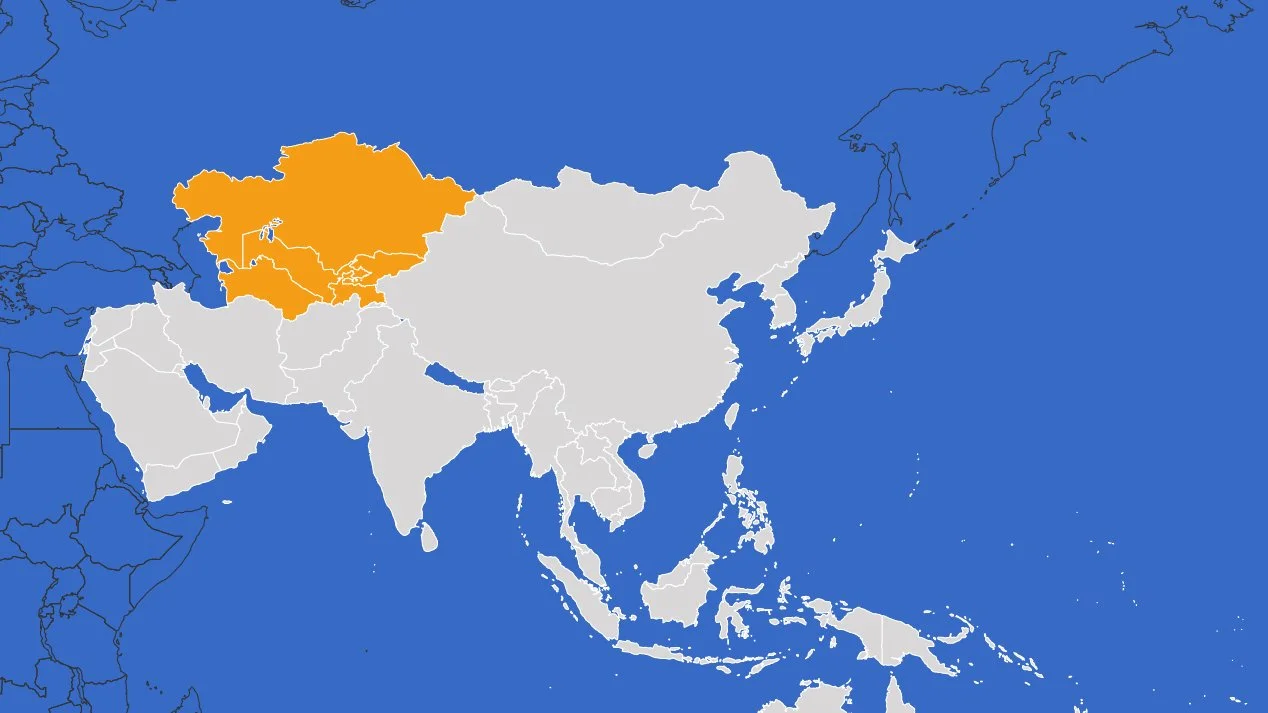Central Asia
The countries & regions of Central Asia:
Kazakhstan | Kyrgyzstan | Tajikistan | Turkmenistan | Uzbekistan
Kazakhstan
Nomadic life in the harsh conditions of the steppe and a completely subsistence economy forced people to produce everything they needed on their own. Kazakh folk crafts were born, fulfilling all the needs of its people, and rarely became a subject of trade. In nomadic tribes, there was a gender division in the types of craft work: Men engaged in processing wood, metal, leather and other types of crafts requiring strength; Women worked in areas requiring assiduity and painstaking work - making and processing felt, wool, various types of weaving and embroidery. Characterised by the phrase, ‘Every craft is like an old song that can be sung in a new way’, the most traditional and widespread crafts from ancient times to the present day are the following: carpet weaving, jewellery, leatherwork, felting, pottery and woodworking.
Kyrgyzstan
Kyrgyzstan is young in years, but has a rich heritage and cultural continuity that dates back to many thousands years of antiquity and history. Kyrgyzstan is a land of high mountains and a long history of nomads. The Kyrgyz are best known for their amazing felt work including yurtas, shirdaks (quilted carpets), ala kiiz (pressed felt carpets), toys, and household goods. Placed along the Silk Route on the historic crossroads of trade and cultural exchange, Kyrgyzstan has a rich variety of languages, literature, folklore, arts, crafts, customs and communities that lend color and variety to Kyrgyz culture. The Kyrgyz Republic firmly upholds the equality of all communities. The official language is Kyrgyz yet Russian forms a common language of all groups.
Tajikistan
Tajikistan is famous for golden embroidery, colorful textiles, and fun toys. The Tajik artisans are very enthusiastic and produce a large number of craft items using both traditional and modern techniques. Textiles are the main handicraft items of the country.
Turkmenistan
Turkmenistan’s tribes have inherited a unique blend of nomadic and city cultures of the Silk Road and preserved extraordinary traditions in carpet making, weaving, embroidery and jewellery. Even today, Nokhur women weave beautiful Keteni Silks, Teke-Tribe families knit the famous Akhal Teke or Bukhara Rugs, and Ersari families create fascinating Yaka and Chirpy Embroidery clearly identifying their clan. Tamdyr oven chorek bread and Somsa making is still practised as a traditional craft. The Yomud people reflect their tribal patterns in their enormous Koshma felts. Turkmen silk and embroidery are outstanding within Central Asia, with each different pattern identifying the clan and tribe of its artist like a family seal.
Uzbekistan
Uzbek applied arts has a wealth of variety when it comes to style, materials and ornamentation. Ceramics, silk and cotton weaving, stone and wood carving, metal engraving, leather stamping, calligraphy and miniature painting are some practices passed down from ancient times. Uzbek craftsmen still practice ancient jewellery making techniques for cutting gemstones, grain filigree, granular work, engraving, embossing, chasing and enamelling, combining these traditions with modern fashion trends. Embroidery is a popular craft in Uzbekistan, with each school distinguished by its unique features of ornamentation, composition, colour range and stitching. In recent history, miniature plastic toys made by Samarkand craftsmen became very popular.
Learn about the countries in our other sub-regions
-
West Asia
-
South Asia
-
South East Asia
-
East Asia
-
South Pacific/Moana Oceania
Meet the people who represent your region
Each region of the WCC-APR is represented by an elected Vice-President, as well as additional Honorary Members and Advisors.

